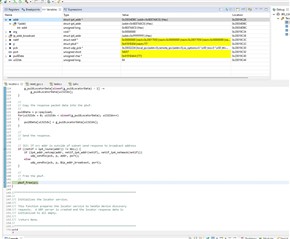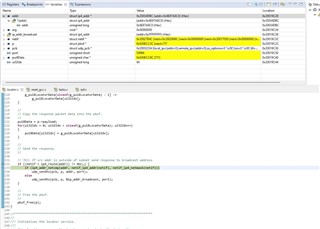An old fault, reported by https://e2e.ti.com/support/microcontrollers/tiva_arm/f/908/p/524931/1909843?tisearch=e2e-sitesearch&keymatch=EPHY_STS#1909843, seems not included in new versions of Tivaware (version 2.2.0.295) in the file tiva-tm4c129.c .
The solution was reading a register for link status just before calling the link-down function:
.
.
/* In this case we drop through since we may need to reconfigure
* the MAC depending upon the speed and half/fui32l-duplex settings.
*/
}
else
{
// HERE IS MY FIX
/* fix link status bit error by reading Basic Mode Status register*/
EMACPHYRead(EMAC0_BASE, PHY_PHYS_ADDR, EPHY_BMSR);
// END OF MY FIX
/* Tell lwIP the link is down */
#if NO_SYS
netif_set_link_down(psNetif);
#else
tcpip_callback((tcpip_callback_fn)netif_set_link_down, psNetif);
#endif
.
As we are in the process of upgrading sensors at off-shore wind turbine sites, a very costly process, we would like to have the findings in that old threat confirmed ?





